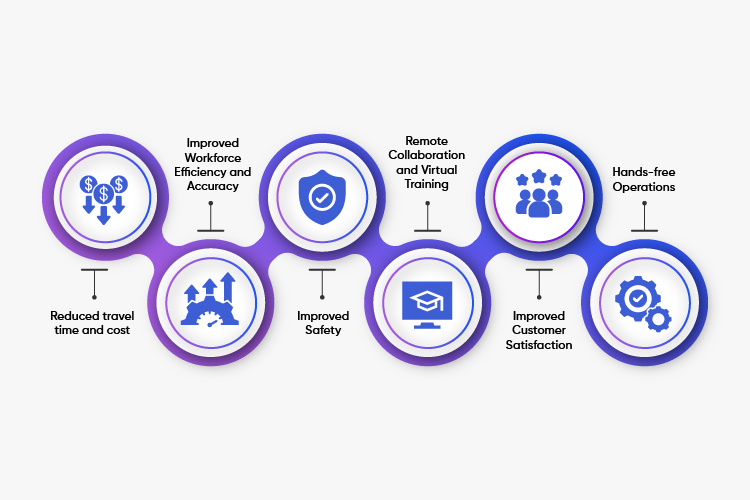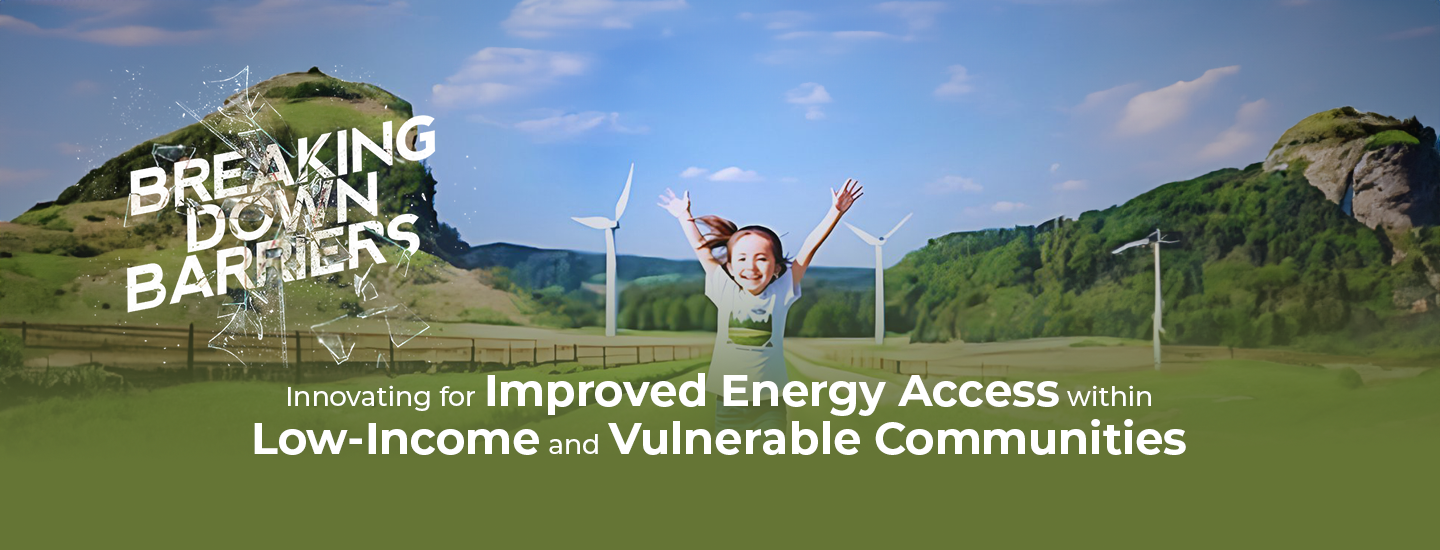Master Blog
Mixed Reality: A Game Changer for Utility Field Service?

In 2003, futurist Ray Kurzweil predicted: “By the 2030s, virtual reality will be totally realistic and compelling, and we will spend most of our time in virtual environments. We will all become virtual humans.”
Mixed reality (MR) technology merges both the physical and digital worlds, encompassing virtual reality (VR), augmented reality (AR), and everything in between. It overlays digital information and objects on the real world, providing users with a deeply immersive experience. Its broad potential spans multiple sectors, ranging from gaming and entertainment to manufacturing, telecom, healthcare, retail, and even field service now.
As futurist Ray Kurzweil predicted, the convergence of the real and virtual is transforming our daily lives. Today, mixed reality (MR) technology offers a groundbreaking solution, merging the physical and digital worlds to create immersive experiences that transcend traditional boundaries.
In a world where the boundaries between physical and virtual realms are blurring, the immense potential to revolutionize field service and unlock utilities' capabilities in the 21st century is becoming ever more apparent.
Today, the utilities industry is currently facing numerous challenges, both external and internal, such as changing consumer expectations, regulatory changes, and the need to reduce operational costs while improving efficiency. However, digital technology disruptions have opened opportunities to address these challenges. Despite being slow to adopt AR technology, the future of utilities with mixed reality (MR) looks promising.
The potential of MR in utility field service is extensive, offering significant advantages in installing, maintaining, and repairing complex infrastructure systems like power grids, water pipelines, and telecommunication networks. Field service operations in the utilities industry require skilled technicians to troubleshoot and fix complex issues, making the use of MR technology highly beneficial.
The potential of MR in utility field service is extensive, offering significant advantages in installing, maintaining, and repairing complex infrastructure systems like power grids, water pipelines & telecommunication networks
These tools can be deployed using mobile devices already available to utilities, such as smartphones, tablets, and rugged laptops. As technology continues to develop, wearables such as smart glasses or head-mounted units will also become common.
Mixed reality (MR) encompasses the fusion of virtual reality (VR) and augmented reality (AR). The utilization of mixed reality (AR & VR) technology can offer several benefits to field service technicians in the utility sector:
- Reduced travel time and cost: By using Mixed Reality, field service technicians can remotely access the site or asset, saving time and money on travel expenses. This also enables them to quickly diagnose issues and determine if a site visit is necessary or the issue can be resolved manually.
- Improved Workforce Efficiency and Accuracy: Through real-time data and detailed instructions, MR empowers field service technicians to troubleshoot and resolve problems swiftly and accurately. Access to a wealth of information, including schematics, blueprints, and manuals, ensures better decision-making and improved work efficiency.
- Improved Safety: Working in utilities can pose risks, but MR mitigates potential hazards by providing technicians with essential safety information and guidelines. Field workers can navigate challenging environments with increased awareness, reducing the risk of accidents and injuries.
- Remote Collaboration and Virtual Training: MR facilitates remote collaboration between field technicians and experts, enabling real-time guidance and support. Virtual training sessions within an immersive environment equip technicians with new skills and enhance their capabilities, contributing to continuous growth and development in a safe space.
- Improved Customer Satisfaction: MR enables field technicians to work hands-free, enhancing their focus and productivity during visual inspections, task debriefing, and workflow instructions. This hands-free capability is especially valuable in challenging and hazardous environments.
- Hands-free Operations: MR enables field technicians to work hands-free, enhancing their focus and productivity during visual inspections, task debriefing, and workflow instructions. This hands-free capability is especially valuable in challenging and hazardous environments.

Apart from these benefits, Mixed Reality has very specific use cases developed in recent years for the utility industry:
- Asset Maintenance, Damage Assessment, Troubleshooting, & Restoration: MR allows field technicians to access real-time information about equipment, part numbers, maintenance history, and operations manuals. Hands-free access to critical data expedites assessments, ordering replacement parts, and consulting off-site technicians for swift problem resolution, particularly in emergency scenarios.
A primary use case of MR in utility field service is asset maintenance, damage assessment, troubleshooting, and restoration. By imposing a 3D model of a part on top of the equipment, field technicians can quickly find information such as asset type, part number, maintenance history, operations manual, etc. With this information, the technician can assess the condition, immediately order a replacement part, or consult with another off-site technician to fix the problem. In the case of emergencies, the use of MR can allow hands-free access to data using natural voice commands to detail the damage, including data, images, videos, etc., using an AR headset. This improves the productivity of the field worker and reduces the time taken to restore the outage. - Visual Vegetation Inspection: Utilities are required to control and remove vegetation on their transmission and distribution lines, and field workers usually collect and monitor the vegetation clearance data using mobile apps. MR technology can therefore help field workers access historical information on the go and collect data hands-free through the voice-based interface. For example, an application allows line workers to see the tree canopy and brush while overlaying visual cues to understand when and where to trim and identify risks like potential tree falls.
A primary use case of MR in utility field service is asset maintenance, damage assessment, troubleshooting, and restoration
- Using MR in integration with Geographical Information system (GIS): By combining MR with a geographical information system (GIS), utilities can more quickly find specific locations for digging, monitoring assets, and better navigating difficult terrain. By digitally visualizing the area and utilizing overlay software, utility workers can swiftly and securely address issues by gaining insight into the underground supply infrastructure and identifying nearby obstacles.
Example: Construction of underground gas pipeline-During the construction or replacement of an underground gas pipeline, it is critical to accurately locate assets and safely perform tasks like excavation and other maintenance activities. Using MR, the information about the underground pipeline and connected assets can be shown using a 3D model with accurate GPS locations. Workers can look up the last repair or replacement history and get the necessary insights to avoid any hurdles or rework and improve the job quality.
As the digital revolution continues to shape the utilities industry, the integration of mixed reality technology emerges as a catalyst for revolutionizing field service and unlocking utilities' potential in the 21st century. With its hands-free operation, real-time information delivery, and intuitive user interface, mixed reality can improve the field workforce safety, efficiency, and quality of work.
As the technology continues to evolve, we can expect to see more innovative use cases and applications of mixed reality in field service operations. By embracing MR, utilities can secure a competitive advantage in their markets, ultimately driving superior outcomes for their customers and stakeholders.
Smart Mobile Workforce (SMW®) is the #1 digital workforce experience (WX) platform for energy, water, gas and public works providers, worldwide. SMW® helps in intelligently managing field operations that make service experiences effortless for the end customers.





